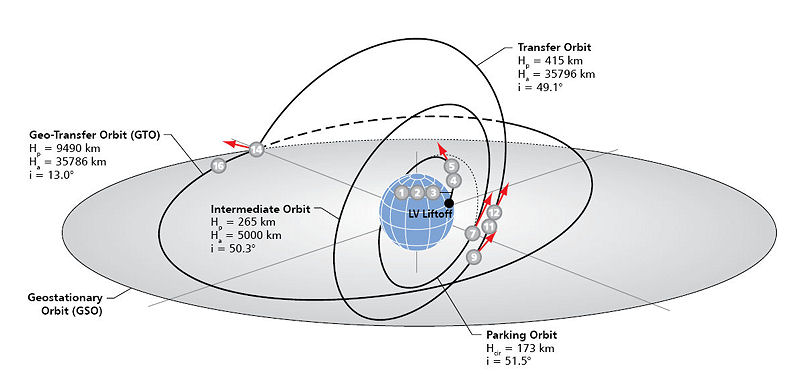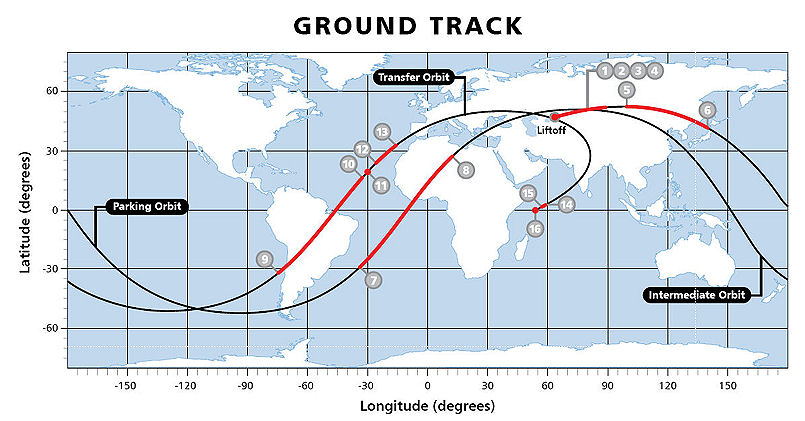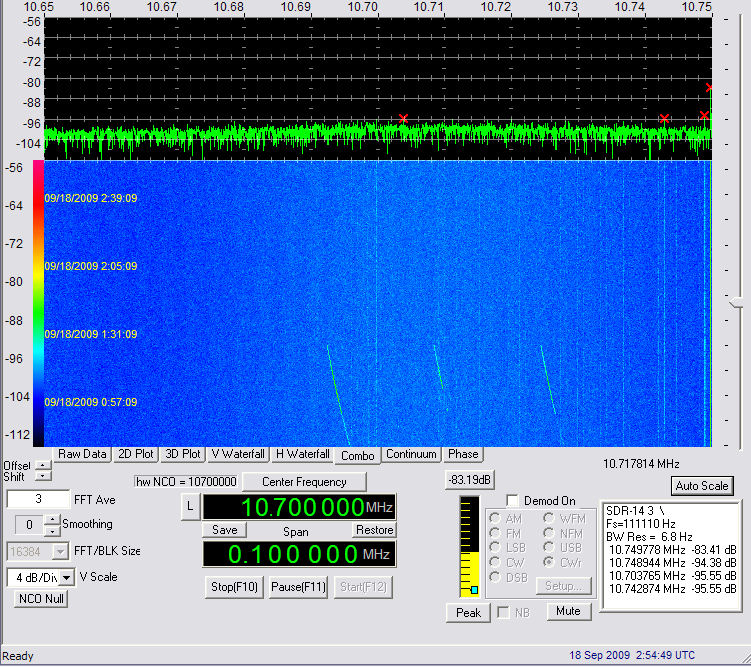
The Proton-M rocket with the Nimiq-5 satellite took off from Baikonur at 1919 UT on 17 September 2009. It flight profile is shown in the graphics below taken from ILS's web site. I have added the time of a few critical events.


| Event # | Mission elapsed time | Mission event |
|
1 |
00:02:00 |
First/second stage separation |
|
2 |
00:05:27 |
Second/third stage separation |
|
3 |
00:05:43 |
Payload fairing sepration |
|
4 |
00:09:41 |
Third stage/Briz-M separation |
|
5 |
00:11:15 |
Briz-M ignition for a 6:35 min burn |
|
6 |
00:17:40 |
Briz-M shutdown |
|
7 |
01:07:40 |
Second Briz-M ignition for a 17:30 min burn. |
|
8 |
01:25:10 |
Second Briz-M shutdown. |
|
9 |
03:29:04 |
Third Briz-M ignition for a 14:03 min burn |
|
10 |
03:43:07 |
Third Briz-M shutdown. |
|
11 |
03:43:57 |
Auxuliary tank jettisoning. |
|
12 |
03:45:24 |
Fourth Briz-M ignition for a 03:18 min burn |
|
13 |
03:48:42 |
Fourth Briz-M shutdown. |
|
14 |
08:53:30 |
Fifth Briz-M ignition for a 08:56 min burn |
|
15 |
09:01:26 |
Fifth Briz-M shutdown. |
|
16 |
09:15:00 |
Spacecraft separation |
| Date 2009 | Time (UT) | Frequency | MET (hr:min) | Remarks |
| 17 Sept | 2054.50-2101.48 | 1020.5 MHz | 01:36-01:43 | Single carrier first then two 12.8 kHz apart from 2057.45 UT |
| 17 Sept | 2317.40-2321.00 | 1020.5 MHz | 03:59-04:02 | Single carrier. C/N=15 dB. Command-off. |
| 17 Sept | 2322.30-2339.00 | 1020.5 MHz | 04:03-04:20 | Three? carriers between two 12.8 kHz apart.One carrier: 2335.10 UT. Dmax 2337. Off watch at 2339 |
| 18 Sept | 0032.10-0123.19 | 1020.5 MHz |
05:13-06:04 |
Center carrier, two side carriers +/- 16 kHz. Present at start of waterfall. Strong. Command-off. |
| 18 Sept | 0428.30-0436.00 | 1020.5 MHz | 09:10-09:17 |
Center carrier, two side carriers +/- 16 kHz. Strong signals. Command-on and command-off. |
I think that the maximum doppler shift occured at 2337 UT. Up until 2339 UT I swicthed to 1018.5 MHz many times but never picked up any signals. After 2339 UT I left the computer to record a waterfall spectrogram on 1020.5 MHz so I could not check 1018.5 MHz.
I let the computer write on the spectrogram every 30 seconds. This may have been a mistake for I missed large parts of the signals. However, it can clearly be seen that the modulation had now switched to carrier plus two extra carriers at +/- 16 kHz (see below).

The last signals picked up from this mission appeared on 1020.5 MHz from six minutes before spacecraft sepration until two minutes after spacecraft separation.